< Back to Verde Valley AVA Climate
Growing Season Temperature
Almost all of the Verde Valley AVA has a Growing Season Temperature1 between 70°F and 75°F (21°C and 24°C), based on data2 from 1981 through 2010.
Growing Season Temperature is the average temperature between April 1 and October 31. It is a common climate-viticulture classification used to compare winegrape-growing regions and to gauge which varieties might do well in an area. Different varieties require different amounts of heat accumulation during the growing season to ripen fruit.
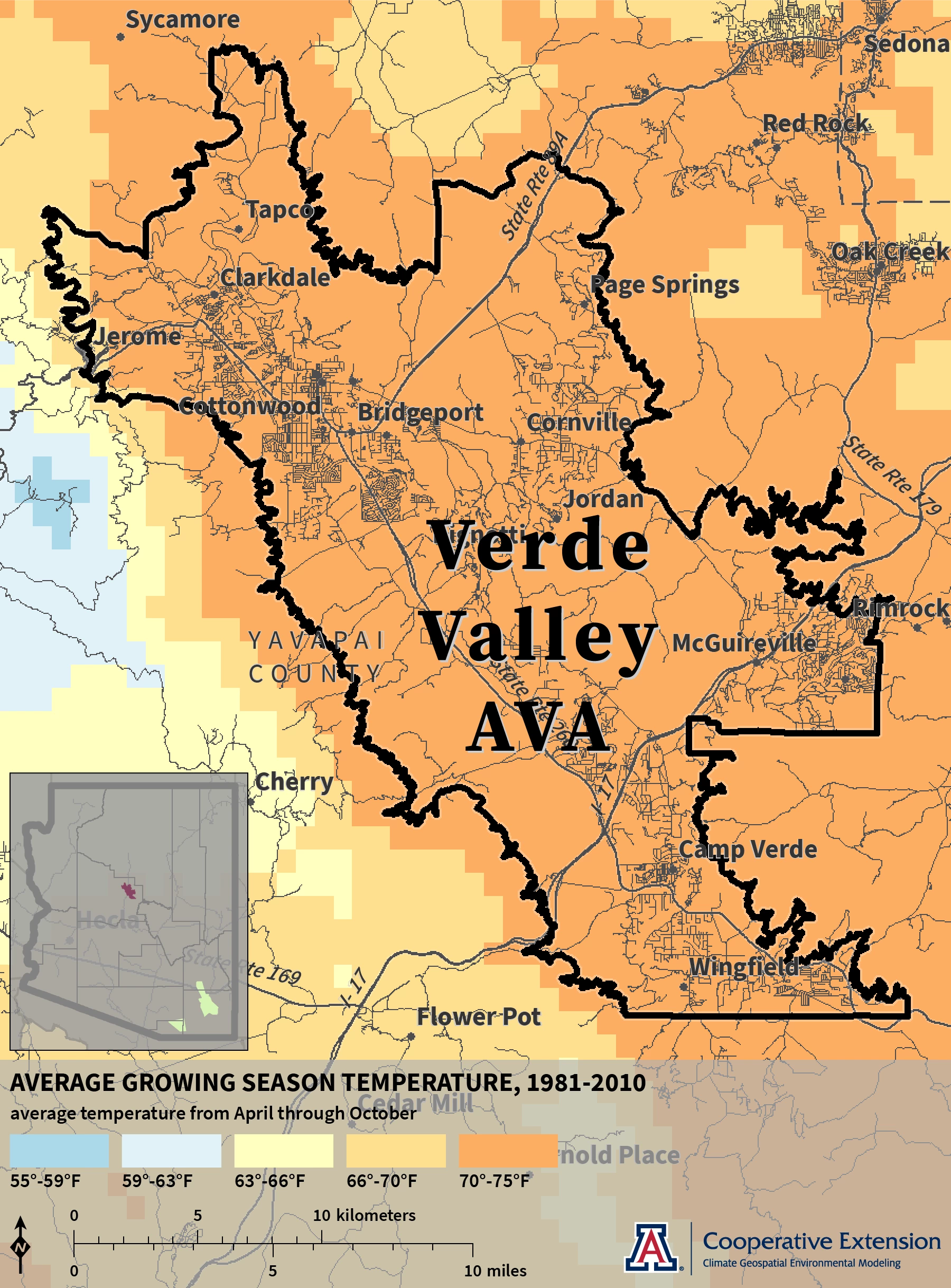
Jeremy Weiss
Winkler Index
Much of the Verde Valley AVA has Winkler Index3 values between 2222 and 2700, based on data2 from 1981 through 2010. Isolated areas in the northern and southern parts have long-term normal values greater than 2700.
Winkler Index values are cumulative growing degree days (10°C-based) between April 1 and October 31. It is a common climate-viticulture classification used to compare winegrape-growing regions and to gauge which varieties might do well in an area. Different varieties require different amounts of heat accumulation during the growing season to ripen fruit.
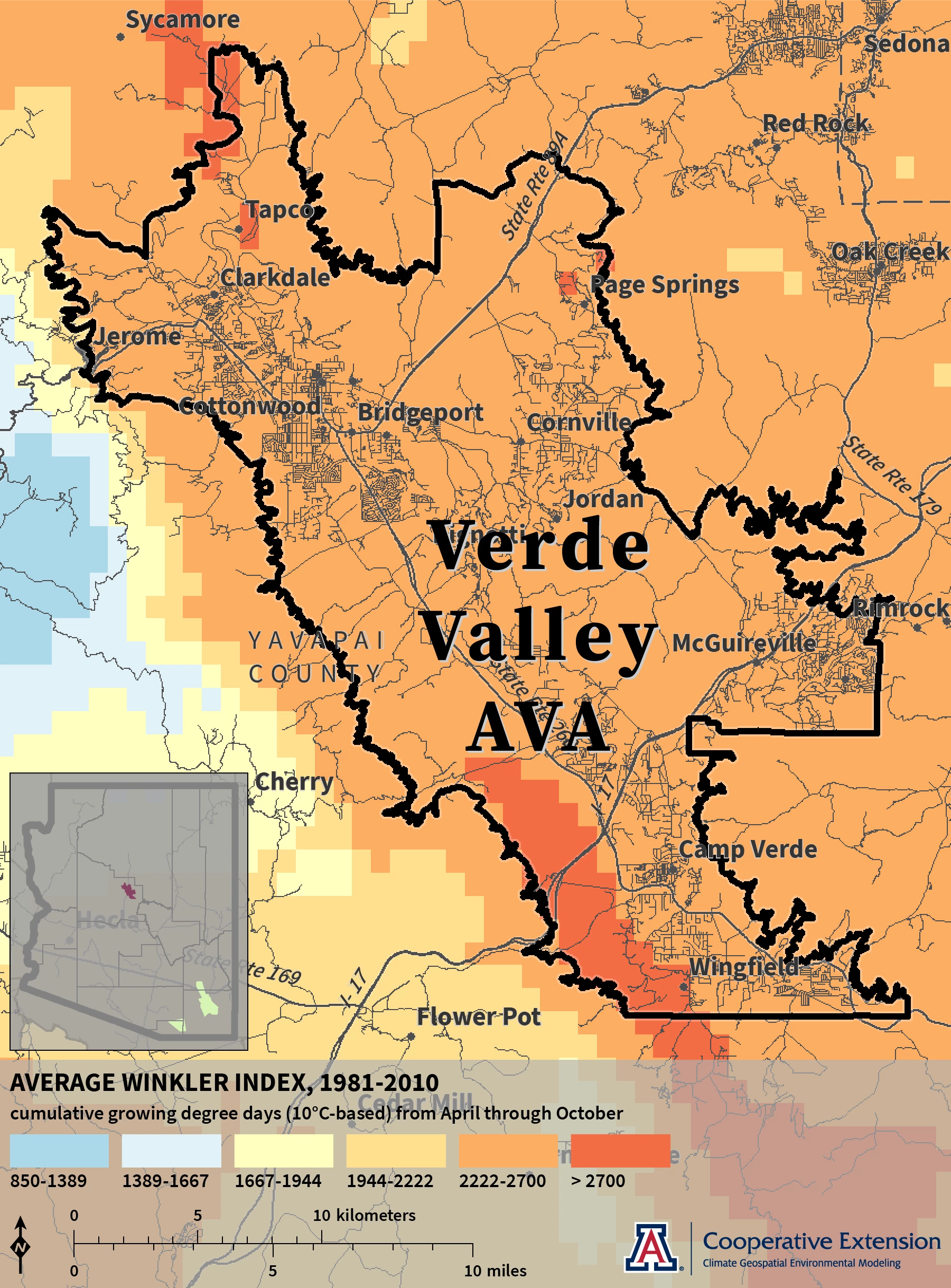
Jeremy Weiss
Huglin Index
Almost all of the Verde Valley AVA has Huglin Index4 values greater than 3000, based on data2 from 1981 through 2010. An area in the northwestern part has long-term normal values that are lower and between 2700 and 3000.
Huglin Index values are cumulative growing degree days (10°C-based) between April 1 and September 30 that additionally account for maximum temperature and daylength. It is a common climate-viticulture classification used to compare winegrape-growing regions and to gauge which varieties might do well in an area. Different varieties require different amounts of heat accumulation during the growing season to ripen fruit.
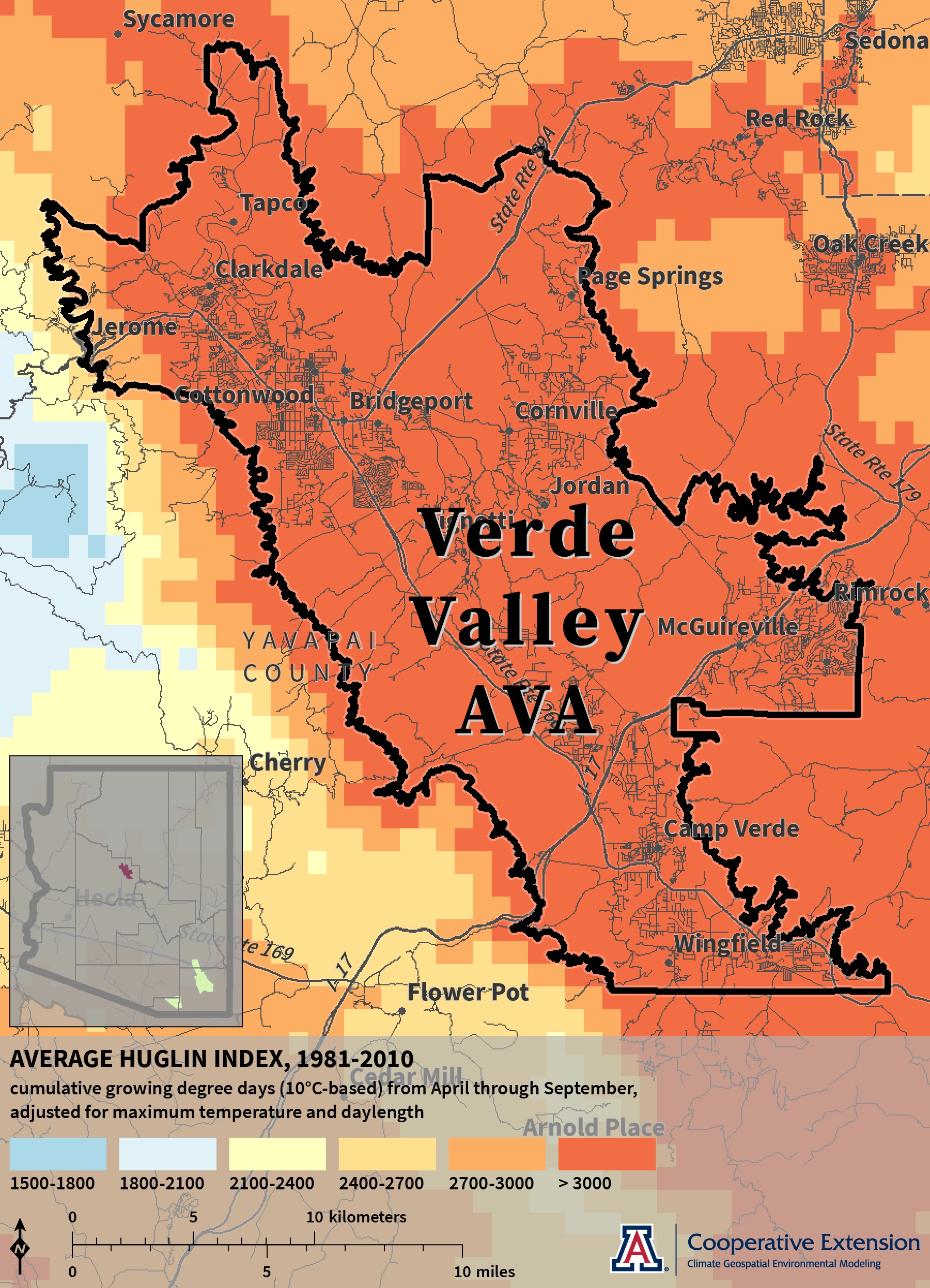
Jeremy Weiss
Biologically Effective Degree Days
Almost all of the Verde Valley AVA has values of Biologically Effective Degree Days5 between 1600 and 1800, based on data2 from 1981 through 2010.
Values of Biologically Effective Degree Days are cumulative growing degree days (10°C-based) between April 1 and October 31 that additionally account for how vine growth rate differs at different temperatures, daylength, and diurnal temperature range. It is a common climate-viticulture classification used to compare winegrape-growing regions and to gauge which varieties might do well in an area. Different varieties require different amounts of heat accumulation during the growing season to ripen fruit.
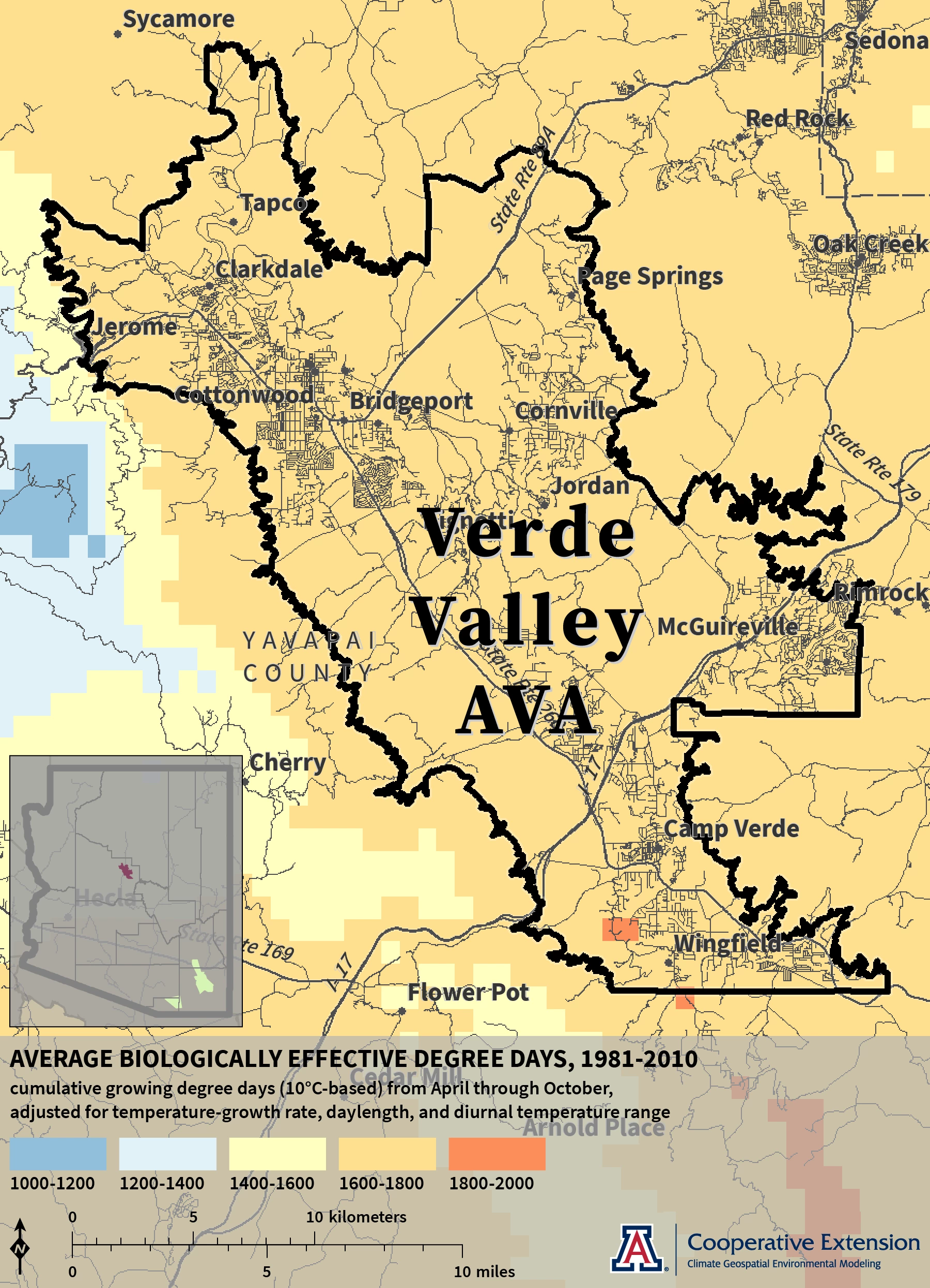
Jeremy Weiss
Last Spring Freeze
Much of the central and southeastern parts of the Verde Valley AVA has an average date of the last spring freeze during the first half of April, based on data2 from 1981 through 2010. Many western and northern areas along the proposed Verde Valley AVA boundary have dates during the second half of March.
The last spring freeze is the latest occurrence of daily minimum temperature below 32°F (0°C) from January 1 through July 31. Freezing temperatures close to the start of the growing season can damage vines and reduce yield.
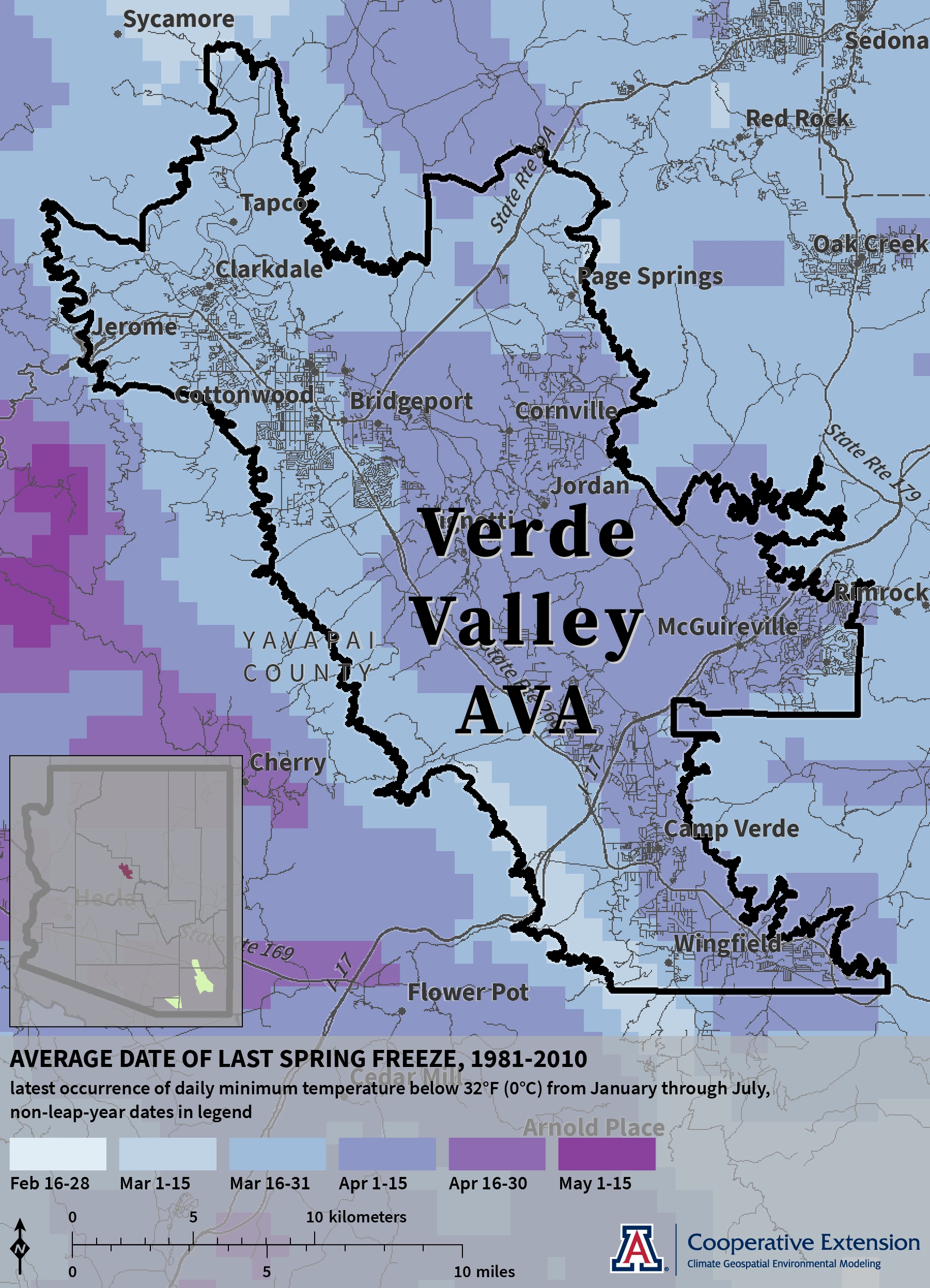
Jeremy Weiss
First Fall Freeze
Almost all of the Verde Valley AVA has an average date of the first fall freeze during the first half of November, based on data2 from 1981 through 2010. Some western and northern areas along the proposed Verde Valley AVA boundary have dates during the second half of November.
The first fall freeze is the earliest occurrence of daily minimum temperature below 32°F (0°C) from August 1 through December 31. Freezing temperatures close to the end of the growing season can damage vines and unharvested fruit, as well as curtail post-harvest photosynthesis and carbohydrate accumulation.
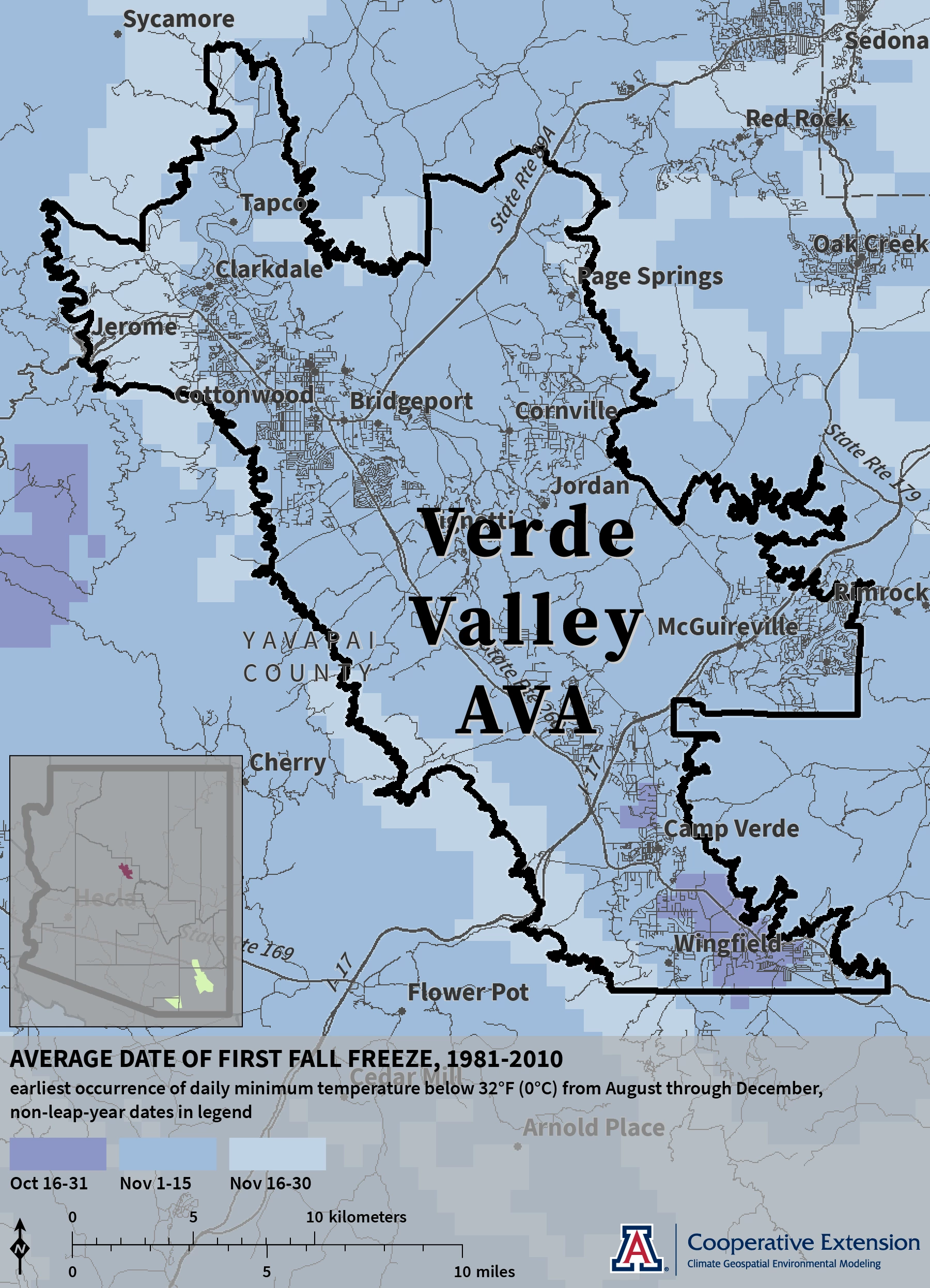
Jeremy Weiss
1Jones GV and colleagues (2005)
2 TopoWx ("Topography Weather")
3Winkler AJ and colleagues (1974)
4 Huglin P (1978) Nouveau mode d’évaluation des possibilités héliothermiques d’un milieu viticole. Comptes Rendus de l’Académie d’Agriculture de France, 64, 1117-1126

